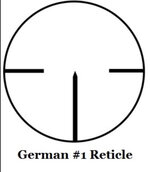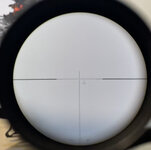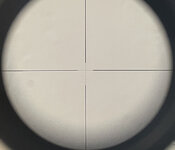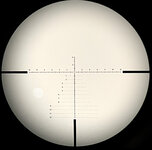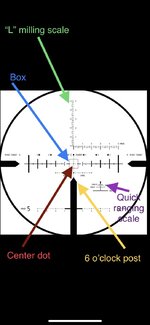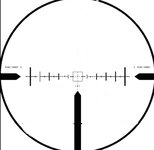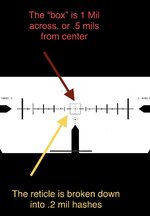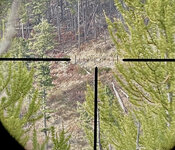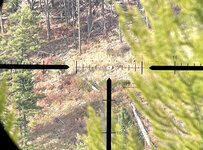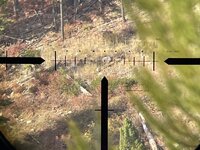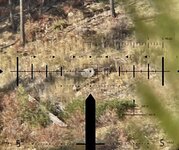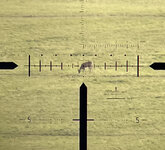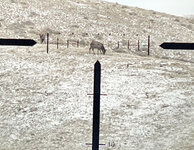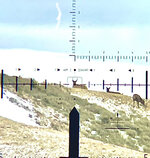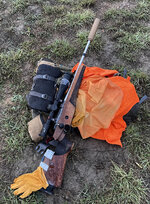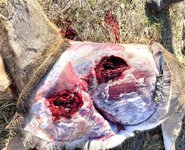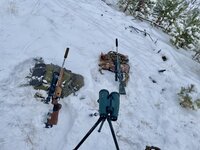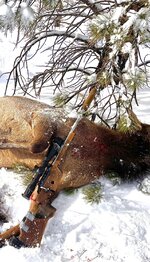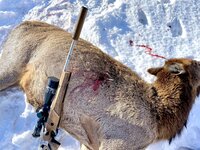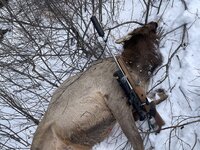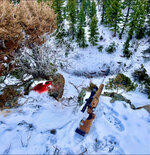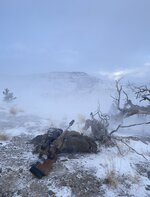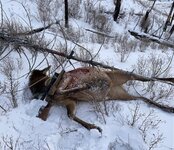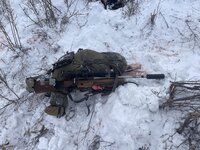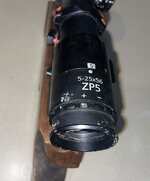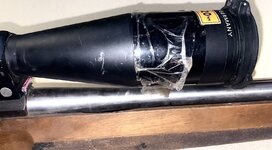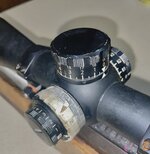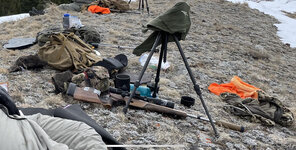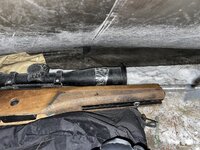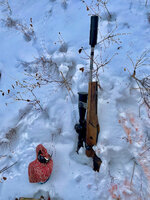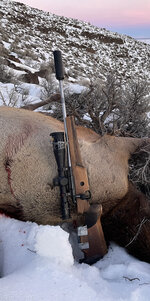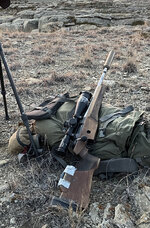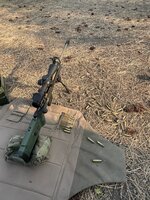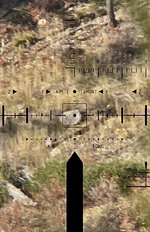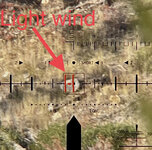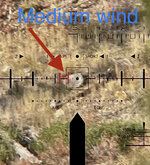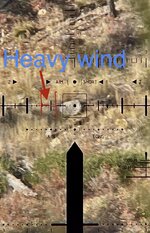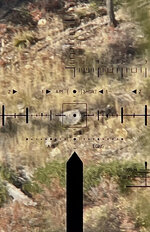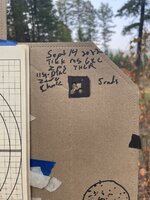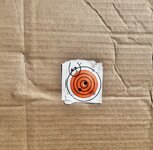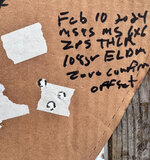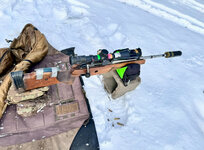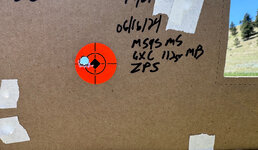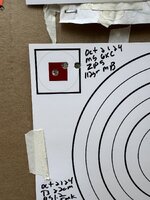- Joined
- Oct 22, 2014
- Messages
- 13,482
This is a field evaluation of the Minox ZP5 5-25x56mm with THLR reticle scope. This scope was purchased for an evaluation, to determine the merits of the THLR reticle in October of 2021. Being that the purpose was to determine the suitability and function of the reticle, the risk of the scope breaking from the drop eval was to great then. However because I had enough time to get it fixed or acquire another before needing it again if it did break, and because it needed to be done, I conducted the eval today. It is different than the standard evals as the scope was shot and used pretty heavily before the drop evals. It has been mounted on both the test 308 rifle to gain baseline information on normal function and use of the reticle, then was moved over to a 6XC that I and a couple others used for the fall hunting season.
So first, the normal eval which was conducted today. The rifle used was a Tikka 595 Master Sporter, with bottom metal permanently bonded into the stock, and the action with enough loctite that it’s all but permanent. Ammunition used is hand loaded 115gr that has shot multiple 10 round groups with the largest being .92 moa- this should result in 30 round groups being +/- 1.2-1.3 moa.
Rifle and bedding:
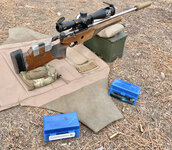
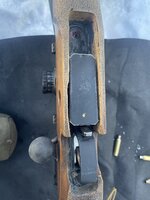

The scope and weight:
Because the scope was mounted before this eval, I do not have pictures of the weight. However, it is just over 35oz. It is a large scope.
Turrets:
Elevation turret is exposed, non revolution indicated, 15 mils per rev, zero stopped with a harder click going into the second revolution. Windage is exposed, non revolution indicated, and rotation limited right and left to 7.2 mils from center each way.
Elevation and windage/ parallax and illumination knob-
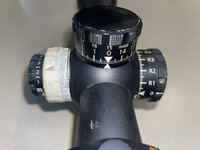
Reticle:
They’ll be a whole lot written about this, so I will just put the pictures here.
5x
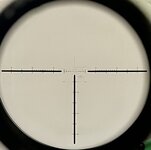
15x
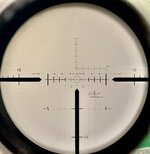
25x
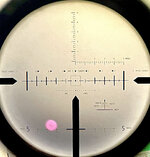
25x with illumination on-
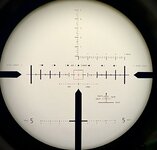
Drop Evaluation RTZ and “Tracking”:
For an explanation see- Scope Field Eval Explanation and Standards
The “test” consists of three 18” drops on a mat- one left/right/top with a shot to check zero after each drop. Then the exact same thing repeated from 36”. Then three drops on all three sides for nine drops on the last part- 15 drops total. This is not “abuse”. The 18” drops are a joke really. The 36” start showing something. And when a scope make/model consistently goes through the whole thing without losing zero, failures in actual use are almost unheard of.
This one was conducted on semi packed, semi crusted snow.
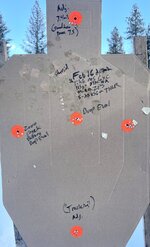
The left dot is a three round check after being beat on for four months. The drop eval is center dot. The right dot is the return to zero. The bottom and top are the “tracking test”.
On the tracking you’ll notice between the top and middle dot there is a bullet hole marked stupid. The is because I used the main reticle up through the “L” shaped milling bar and did not add the bottom 2 mils on it. I dialed and shot 5.5 instead. I then remeasured using the horizontal lines and came up with 7.5 or 7.4 mils. I used 7.4, however after shooting it and measuring with the correct part of the reticle it should have been 7.5 or 7.6 mils.
The short version is the scope functioned correctly, held zero through the drop eval, RTZ’d correctly, and adjusted to less then 1% at 7.5 mils.
Cont.
So first, the normal eval which was conducted today. The rifle used was a Tikka 595 Master Sporter, with bottom metal permanently bonded into the stock, and the action with enough loctite that it’s all but permanent. Ammunition used is hand loaded 115gr that has shot multiple 10 round groups with the largest being .92 moa- this should result in 30 round groups being +/- 1.2-1.3 moa.
Rifle and bedding:



The scope and weight:
Because the scope was mounted before this eval, I do not have pictures of the weight. However, it is just over 35oz. It is a large scope.
Turrets:
Elevation turret is exposed, non revolution indicated, 15 mils per rev, zero stopped with a harder click going into the second revolution. Windage is exposed, non revolution indicated, and rotation limited right and left to 7.2 mils from center each way.
Elevation and windage/ parallax and illumination knob-

Reticle:
They’ll be a whole lot written about this, so I will just put the pictures here.
5x

15x

25x

25x with illumination on-

Drop Evaluation RTZ and “Tracking”:
For an explanation see- Scope Field Eval Explanation and Standards
The “test” consists of three 18” drops on a mat- one left/right/top with a shot to check zero after each drop. Then the exact same thing repeated from 36”. Then three drops on all three sides for nine drops on the last part- 15 drops total. This is not “abuse”. The 18” drops are a joke really. The 36” start showing something. And when a scope make/model consistently goes through the whole thing without losing zero, failures in actual use are almost unheard of.
This one was conducted on semi packed, semi crusted snow.

The left dot is a three round check after being beat on for four months. The drop eval is center dot. The right dot is the return to zero. The bottom and top are the “tracking test”.
On the tracking you’ll notice between the top and middle dot there is a bullet hole marked stupid. The is because I used the main reticle up through the “L” shaped milling bar and did not add the bottom 2 mils on it. I dialed and shot 5.5 instead. I then remeasured using the horizontal lines and came up with 7.5 or 7.4 mils. I used 7.4, however after shooting it and measuring with the correct part of the reticle it should have been 7.5 or 7.6 mils.
The short version is the scope functioned correctly, held zero through the drop eval, RTZ’d correctly, and adjusted to less then 1% at 7.5 mils.
Cont.


